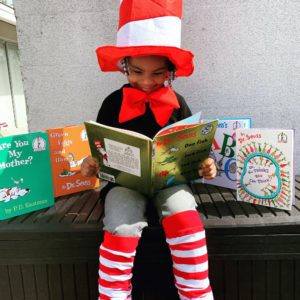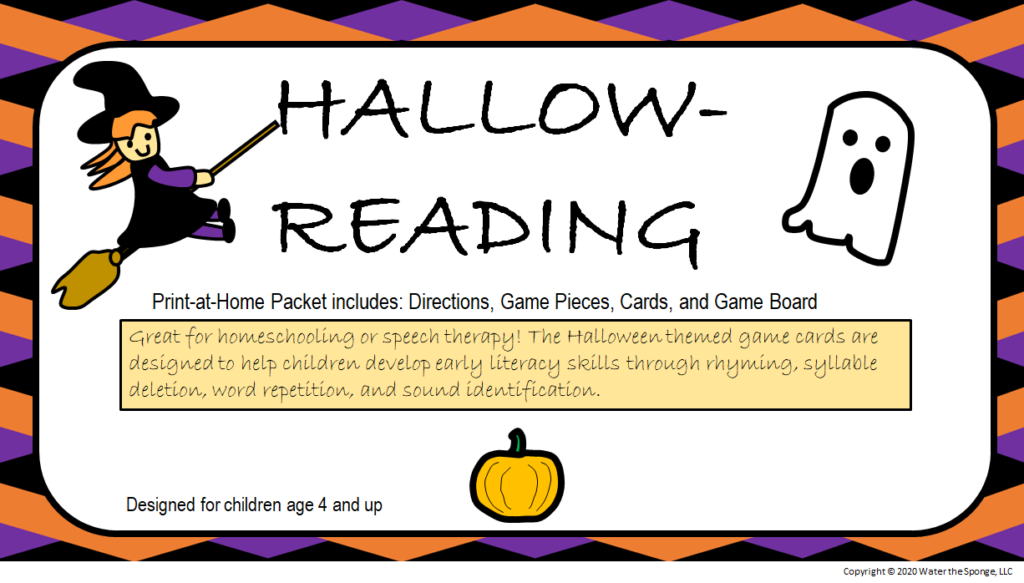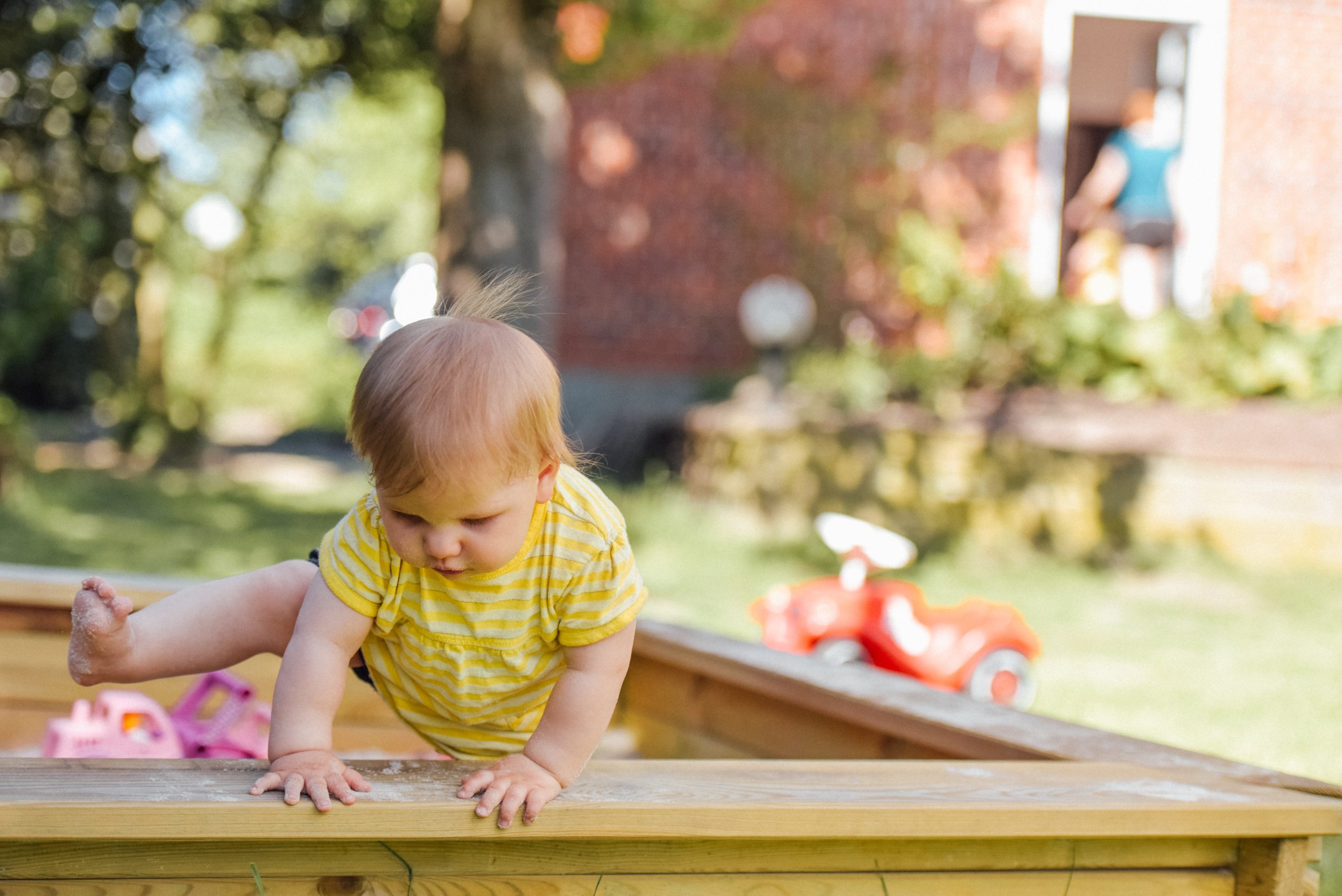Hey diddle diddle, the cat and the fiddle,
The cow jumped over the moon,
The little dog laughed to see such sport,
And the dish ran away with the spoon.
We introduce rhyming to our children at an early age. Rhyming is embedded in songs, poetry, nursery rhymes, and literature all around us.
What is rhyming? According to Merriam-Webster, rhyming is defined as “correspondence in terminal sounds of units of composition or utterance (such as two or more words or lines of verse).”
Or, as I tell my children and clients, rhyming is defined as words that sound the same at the end, such as “hat” and “cat.”
Why Rhyming is Important
So what’s the big deal? Have you ever wondered why so much emphasis is put on rhyming? How can rhyming help a child with speech and language skills?
The following list encompasses ways in which rhyming boosts early literacy skills. Click on a topic to jump to it.
Let’s take a little bit of a closer look at how rhyming impacts each of these skills.
Reading Readiness
Rhyming is one aspect of language that helps build a strong foundation for reading readiness. While there are several additional factors involved in children’s ability to decode words, rhyming aids their comprehension of how words go together.
Children who have strong reading abilities oftentimes have strong rhyming abilities as well. The opposite typically holds true – children who have lower reading abilities often have poor rhyming abilities.
If your child is not strong at rhyming just yet and you’re reading this, please don’t fret! As I mentioned at the beginning of this passage, rhyming is not the only pre-literacy factor as there is much more that goes into reading than just rhyming. However, if you have some extra time to spend with your little one, rhyming is one way to help prepare him for reading!

Phonemic Awareness
When kids learn how to rhyme, they are building their phonemic awareness, or their ability to hear, understand, and manipulate units of sound, also known as phonemes.
Phonemes are the smallest unit of sound and in the English language, we have 44 phonemes. This accounts for the fact that each vowel can have multiple sounds (e.g., short vs. long “a”), vowel combinations produce new sounds (e.g., “oi”), and consonant combinations can produce new sounds (e.g., “th”).
For instance, the word “dog” has three letters (d-o-g) and also three phonemes (“d”-“aw”-“g”).
Conversely, the word “thinking” has eight letters (t-h-i-n-k-i-n-g) and only six phonemes (“th”-“i”-“ng”-“k”-“i”-“ng”).
Children who are strong rhymers can hear differences in sounds, understand what those differences are, and can then manipulate them. They are able to take the word “dog” and swap out the “d” for “l” to make “log.” Having this skillset is vital to reading and spelling.
Spelling
Learning how to spell words in English can be daunting no matter how old you are. There are days that I still have to look up how to spell words, and I am a native English speaker who is monolingual and an expert on the subject. Let’s face it, there are endless rules and exceptions to rules, except when there aren’t.
The good news is that we can help out children by teaching them how to rhyme. When children are able to rhyme then they can group words together into various word families which will aid them in their ability to spell words.
“Word families are groups of words that have a common feature or pattern.”
Citation
If a child knows that the word “dog” is spelled “d-o-g” and they know “log” is a word that rhymes, then they are likely to guess that “log” is spelled “l-o-g”. Even though this approach to spelling isn’t foolproof (e.g., “fly” rhymes with “eye”), it is still a great start for little ones!
Learning Suffixes
As stated above, children who are fantastic at rhyming understand what words belong together in word families. They grasp that words have patterns, particularly when it comes to endings.
This is useful because rhyming introduces the concept of a suffix to a child. According to Merriam-Webster, a suffix is “an affix occurring at the end of a word, base, or phrase.”
There are many common suffixes that occur in English, one such example being -ly. Children who learn how to rhyme begin to understand how words are pieced together and recognize suffixes. In turn, their knowledge of suffixes will boost literacy and spelling.
Prediction
Once your child starts understanding the rhythm and reasoning behind rhyming, she will be able to use those skills to predict what comes next in a song, poem, or book.
Here is an example of how you can ask your child to predict what happens next:
Twinkle twinkle little star,
How I wonder what you ______. (Let child fill-in-blank.)
Up above the world so high,
Like a diamond in the ________. (Let child fill-in-blank.)
Twinkle, twinkle little star,
How I wonder what you _____. (Let child fill-in-the-blank.)
Having the ability to predict what will come next is especially important when it comes to reading and reading comprehension. Laying the foundational knowledge through rhyming will boost your child’s ability to read later in life. Prediction is linked to cause-and-effect as well as sequencing, which are crucial literacy skills.
Not only will your child learn how to predict what will come next plotwise, but she will also be able to predict what words come next will come next when reading. There are times that we misread words and it is important to be able to go back and realize that what we read was incorrect. One way we keep ourselves in check is by asking ourselves whether or not the sentence or word we read made sense given what we had predicted.
Now that we know how rhyming impacts early literacy, let’s look at some interactive ways to rhyme with little ones!

Let’s Water the Sponge!
First off, I encourage you to purchase the game above to improve your little one’s early literacy skills! The target age range is 4 years and older, but my three-year-old has been able to complete some of the rhyming tasks.

Below are some ideas below for younger children and older kids as well of ways to enmesh rhyming into your daily life.
Read to Your Child
There are so many wonderful children’s books that incorporate rhyming! Dr. Seuss wrote myriad children’s rhyming books. Here are some other great books that incorporate rhyming:
- Harold and the Purple Crayon
- Chicka Chicka Boom Boom
- Brown Bear, Brown Bear
- Llama Llama Red Pajama
In fact, here is an ultimate list of the 75 best rhyming books! There are incredible options on this website, and I love the variety! Check it out if you haven’t seen this list already – I was very impressed by it.
Keep in mind that reading doesn’t just have to solely take place through books! My children love it when I read poems to them as well. Our go-to right now is Where the Sidewalk Ends by Shel Silverstein.
Nursery Rhymes
Nursery Rhymes are rhythmic and incorporate rhymes. They are easy to say or sing. Here are some examples:
- Baa, Baa Black Sheep
- Twinkle, Twinkle Little Star
- Humpty Dumpty
- Hey Diddle Diddle
- I’m a Little Teapot
- Mary had a Little Lamb
There are many, many more! Children love listening to these and repeating them when they get older. Say or sing these to your kiddos often to help them learn how to rhyme.
Sing Songs
Nursery rhymes are not the only children’s songs that exist for rhyming. There are all sorts of rhyming songs out there for kids!
- The Wheels on the Bus
- The Ants go Marching
- Old MacDonald
- Herman the Worm
- Head, Shoulders, Knees & Toes
- Down by the Bay
- Itsy Bitsy Spider
If you have an Alexa, you can ask her to play the station “Nursery Rhyme Party Time” and you can have a song and dance party! (Side note: Our 3-year-old currently LOVES asking Alexa to play various music. Haha, lucky us!)
Word Play: Rhyming Real and Nonsense Words
When children are first learning how to rhyme, it is important that they understand the concept of what rhyming is and how to do it instead of forcing them to rhyme real words with one another.
What do I mean, exactly? Let’s say that you ask your child to say a word that rhymes with “cat” and he responds with “zat.” Instead of informing him that “zat” is not a real word, just play along and make it a game! Remember that he is still learning and congratulate him on his rhyme.
As your child gets older, however, you can make this task more challenging by asking whether or not the word is a real word versus a nonsense word. Making sure your child understands the difference between the two ensures a solid vocabulary.
Final Thoughts
While rhyming may not be the most critical early predictor of reading ability, it does play a crucial role in reading development. Kick back, relax, and have some fun playing around with words with your little one! There are so many wonderful resources, songs, and books available to us, let’s make sure to expose children to these educational materials from an early age!

What are your questions about rhyming? Have a funny story? Feel free to drop a comment or question below!


